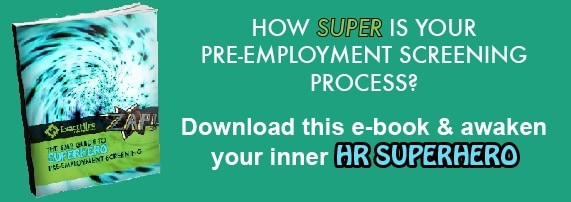Oregon Ban The Box Legislation
As we approach the final quarter of 2015, it is never too early to start preparing for new legislation that will affect hiring practices in 2016. Effective January 1, 2016, Oregon will become the newest state to implement “Ban the Box” legislation for both public and private sector employment. Other states that have already enacted this practice in both public and private sector employment are Illinois, Rhode Island, Minnesota, Massachusetts, Hawaii and New Jersey.
Oregon governor, Kate Brown, signed House Bill 3025 on June 26, 2015. This law, H.B. 3025, will take effect on January 1, 2016 and prohibits an employer from requiring an applicant to disclose a criminal conviction on an employment application or prior to an interview. If an employer does not conduct an interview, the employer is prohibited from requiring an applicant to disclose a criminal conviction prior to a conditional offer.
Employers are able to notify applicants that they will later be required to disclose convictions or that a criminal background check will be conducted as part of the hiring process. This legislation does include the caveat that an employer may still consider convictions when making hiring decisions. For additional information on what this legislation includes, visit the Oregon State Legislature and The National Law Review.
Upcoming “Ban the Box” Legislation
To keep abreast of states and cities who enact “Ban the Box” legislation, the National Employment Law Project (NELP) has an interactive map that provides an overview of the current legislative status. For the actual legislation, you will need to go directly to the state or city government website to access the passed law(s) in its comprehensive language.
Employers need to be aware of the legislation that exists and what legislation is pending to be prepared for the potential impact on their organizations. If your organization currently has hiring practices in multiple states and cities, or posts job listings nationally, it is important to be cognizant of the locales’ legal expectations and determine if you need to alter verbiage on your employment application(s) and/or change specific steps in your hiring practices to be compliant with “Ban the Box” legislation.
Please note: The ExactHire team is not legal counsel, and we do not offer legal advice, so any questions regarding your company’s eligibility for exemption with the “Ban the Box” legislation and/or proper verbiage for your company’s employment application(s) should be discussed with your company’s legal counsel. To learn specifically how Oregon’s H.B. 3025 affects your organization’s hiring practices, please contact your company’s legal team.
ExactHire Clients
At ExactHire, we take pride in doing our best to ensure our clients’ satisfaction is the highest possible. We do whatever we can to resolve clients’ current needs and identify potential needs. After you speak with your legal counsel, and if you and your legal team decide changes need to be made to your employment application(s) to comply with legislation, the ExactHire team can work with you to create a new application with the verbiage you specify for compliance. Also, please know that one of the benefits of using ExactHire’s HireCentric software as your applicant tracking system is that you can create multiple employment applications, each specific to your needs. If you’re an existing client looking for more information about updating your current employment application(s) and/or creating additional employment applications, please email support@exacthire.com, and let us know your needs.
Learn More About ExactHire Solutions
If you are not yet an ExactHire client, for more information about HireCentric ATS, please visit our resources page or contact us today.


